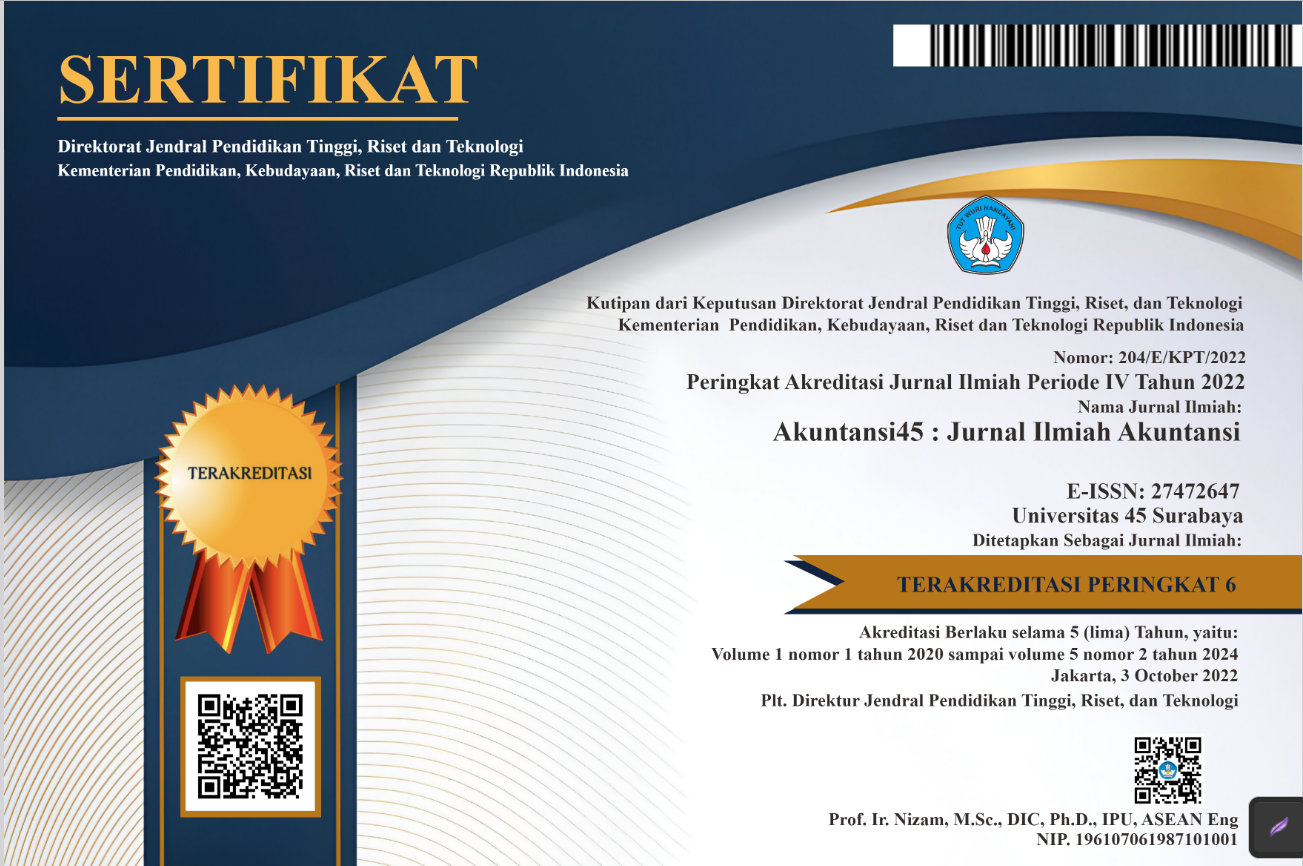Pengembangan Strategi Bisnis Pada Desa Wisata Gamplong Kabupaten Sleman Sebagai Penggerak Agrowisata Berbasis Ekonomi Kreatif
DOI:
https://doi.org/10.30640/akuntansi45.v4i2.1755Keywords:
Agro-Industry, Creative Economy, Natural Fiber, SWOT, Tourism VillageAbstract
This research presents SWOT analysis in Gamplong tourism village which has natural fiber craft agroindustry based on creative economy Sleman Regency. Internal and external conditions are needed to identify problems that occur to launch the best strategy in developing tourism villages. This reserach was conducted by doing an observation to figure out that tourism village based on creative economy has its own characteristics in developing the local potential especially in independent tourism villages because it can be role model for developing and growing tourism villages to develop their local potential. Conducting interviews to get internal and external factors of the tourism village The SWOT analysis is done by performing quantitative weighting and ranking against these factors by ten respondents from internal and external of tourism villages. The results of this research indicates that Gamplong Tourism Village is in cell V of Matrix IE where cell V presents growth and stability phase. The best strategy for this position is concentration through horizontal integration that is expanding the company how to develop business in other locations, and improve the types of products and services.
References
_____. (2008) “Rencana Pengembangan Ekonomi Kreatif 2009-2025”. Departemen Perdagangan Republik Indonesia. Depdag RI, 2008
Chang, H.-H., & Huang, W.-C. (2006). Application of a quantification SWOT analytical method. Mathematical and Computer Modelling, 43(1–2), 158–169. https://doi.org/10.1016/j.mcm.2005.08. 016
David, F.R. dan Forest R.D. (2015) Strategic Management Concepts and Cases Fifteenth Edition. Pearson Education. London
Deptan, 2005. Agrowisata Meningkatkan Pendapatan Petani. http://database.deptan.go.id
Gamble, J.E. Arthur Thompson, Jr., Margaret Peteraf (2013) Essential of Strtaegic Management The Quest for Competitive Advantage 3 rd Edition. McGraw Hill Company. New York.
Gunn, R., & Williams, W. (2007) Strategic tools: an empirical investigation into strategy in practice in the UK. Strategic Change, 16(5), 201–216. https://doi.org/10.1002/jsc.799
Nurwafi F, Luthfi. (2015) Dinamika Pembentukan Kelompok Sadar Wisata di Desa Wisata Nglanggeran. Jurnal Studi Pemuda Vol.. 4, No.2
Pearce, J. A., & Robinson, R. B. (2007) Manajemen Strategik: Formulasi, Implementasi, dan Pengendalian. Jakarta: Salemba Empat.
Rangkuti, F. (2005) SWOT Balanced Scorecard Teknik Menyusun Strategi Korporat yang Efektif Plus Cara Pengelola Kinerja dan Risiko. Jakarta : PT Gramedia Pustaka Utama
Salman, Duygu. (2010) Rethinking of Cities, Culture and Tourism within a Creative Perspective. PASOS, Vol. 8
Spillane. James J. (2012) Pariwisata Indonesia. Yogyakarta: Kanisius
Suparwoko. (2010) Pengembangan Ekonomi Kreatif Sebagai Penggerak Industri Pariwisata Kabupaten Purworejo, Jawa Tengah. Conference Paper. https://www.researchgate.net/publication/273122669
Tinarbuko, Anggertimur Lanang. (2018) Kajian Klasifikasi Desa Wisata Kabupaten Sleman. D.I Yogyakarta : Dinas Pariwisata Kabupaten Sleman
UNWTO. (2011) UNWTO World Tourism Barometer. United Nations World Tourism Organization. Madrid, Spain









